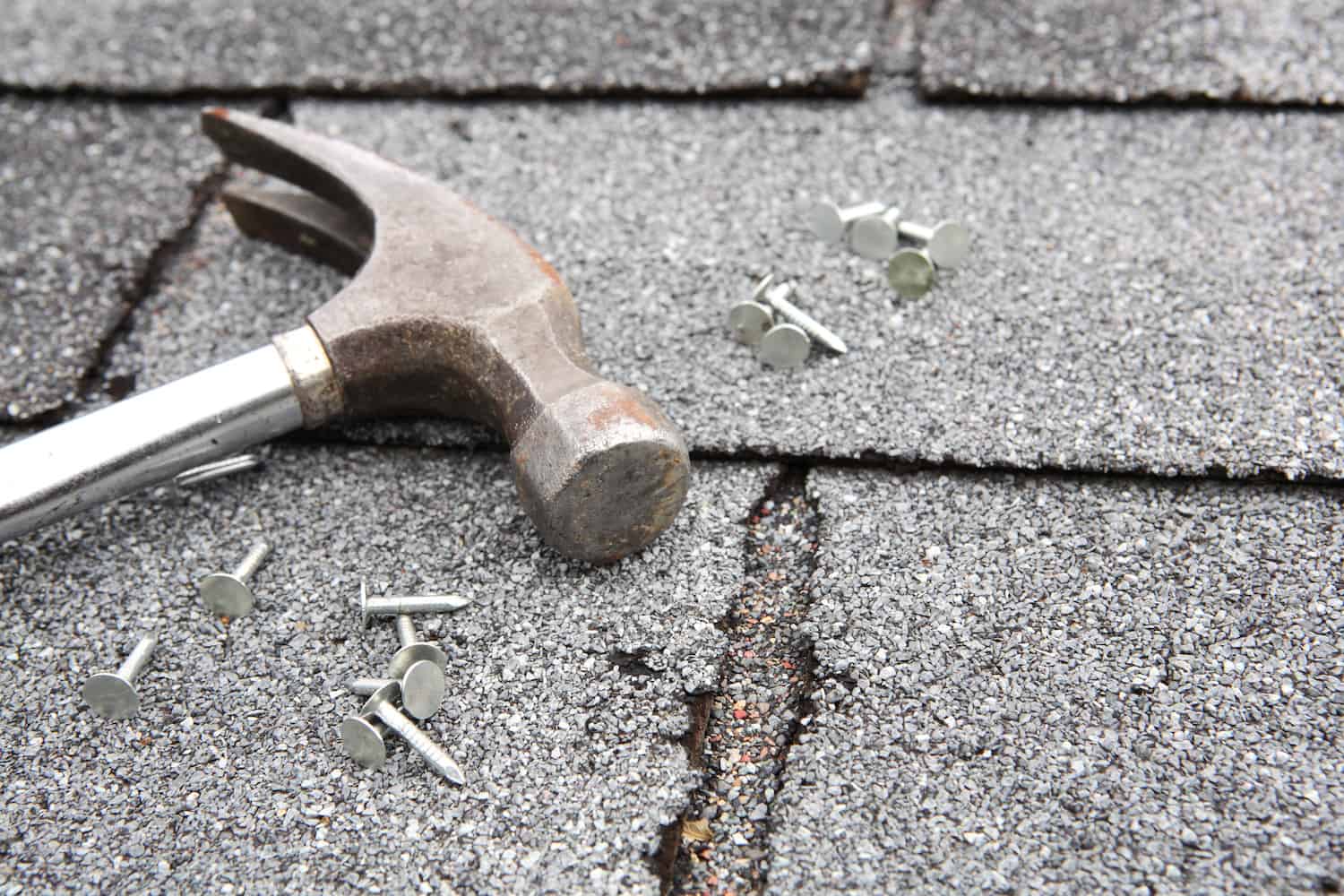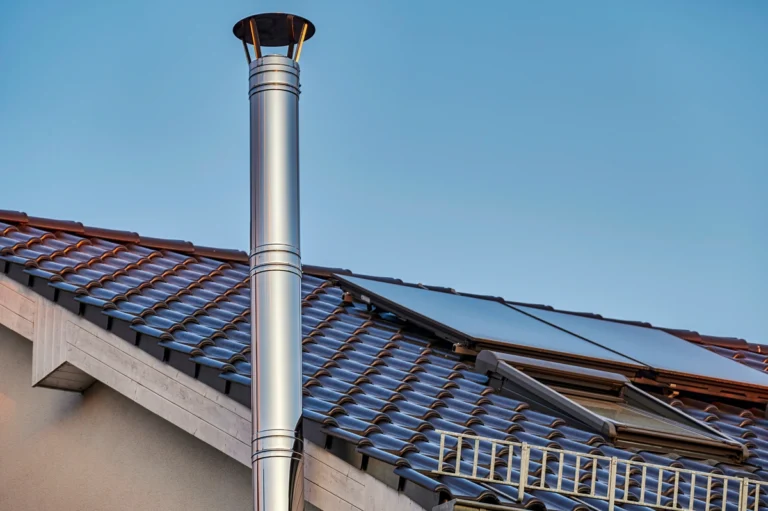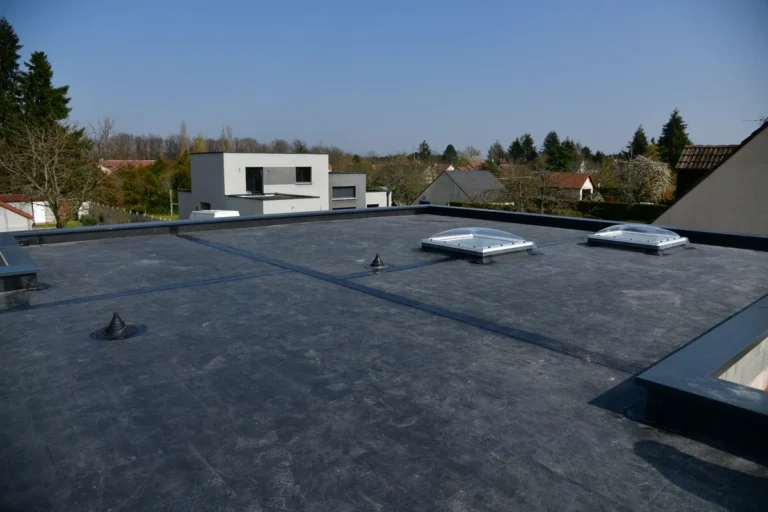Buying your first home is one of the most fun and exciting experiences you can have! You find your dream home within your budget and finally move in. But that fun can quickly wear off when you experience your first emergency roof repair.
Depending on where you live, you may experience intense storms— tornadoes, hurricanes, hail storms— that can be strong enough to damage your roof pretty badly. And when that happens, you need to act fast!
Getting your roof repaired ASAP is vital to preventing water leaks and further damage.
Lucky for you, we put together a homeowner’s guide to emergency roof repair that includes tips, tricks, and next steps. Keep reading to stay safe and dry!
What Are the Signs of Roof Damage? 🤷
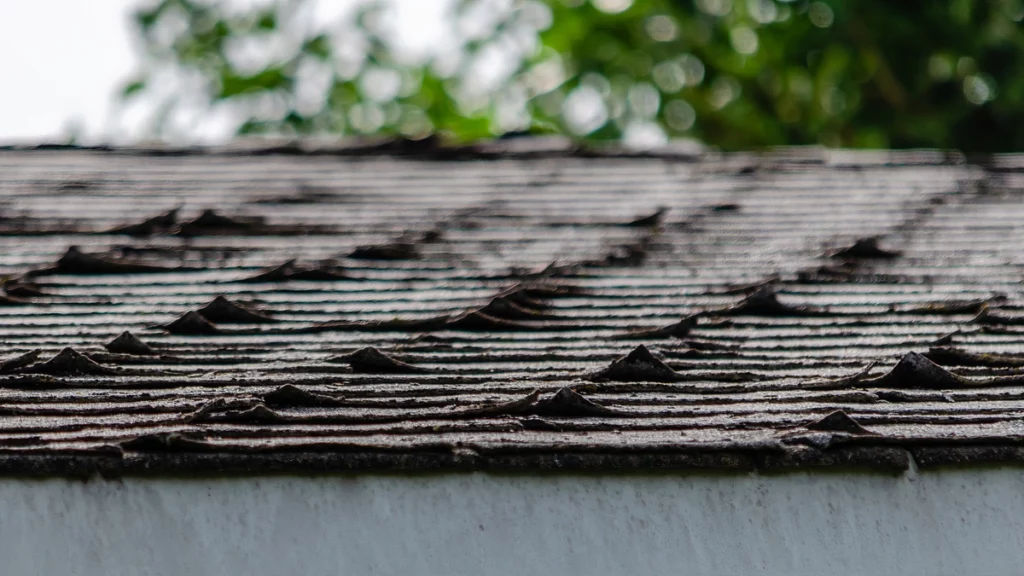
The first step to emergency roof repair is identifying that you have damage in the first place. Everything from high winds to hail to an aging roof can lead to your roof being damaged during a storm or other weather event.
It’s important to know that a storm doesn’t need to be a natural disaster for your roof to be damaged. So, after any strong storm, there are a few different things you should look for:
Water Spots on the Ceiling 💦
One of the tell-tale signs that your roof has been damaged and is leaking is water spots on your ceiling.
If you see any brown or yellowish stains on your ceiling, it’s time to call a roofing professional. These stains can also be caused by trapped moisture in your attic, but that typically happens over time.
If you see a sudden large water spot it’s a good sign you have an immediate roof leak that needs attention.
Missing or Loose Shingles 🏚️
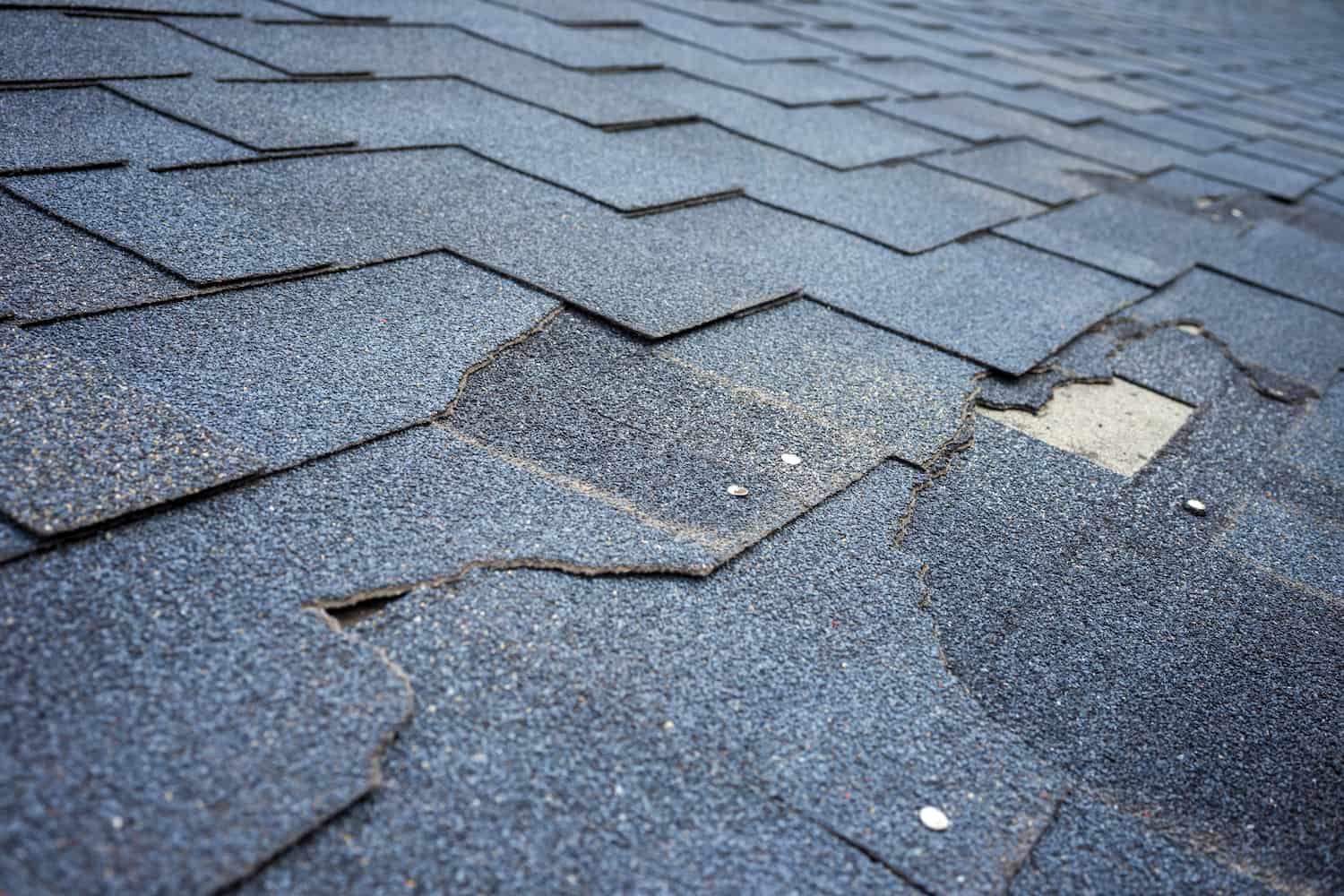
After a storm, it’s a good idea to walk around your property and check for any missing or loose shingles. If you find any, that’s a sign that your roof needs emergency repair. Not only are missing shingles unsightly, but they can also lead to more serious problems like water leaks if not addressed quickly.
Roof Granules Missing 🪨
On asphalt shingles, there is a top layer of fine granules that are your roof’s first line of defense against weather and debris hitting the roofing materials. Hail and debris hitting your shingles can cause these granules to fall off.
Signs of granule loss could be bald spots or discoloration on your shingles, or you might find these fine granules in your gutters and downspouts.
Cracked or Dented Shingles 💔
In addition to missing granules, you might notice that some of your shingles are cracked or dented. These cracks and divots can also lead to leaks if not addressed quickly.
Light Shining Through the Attic ☀️
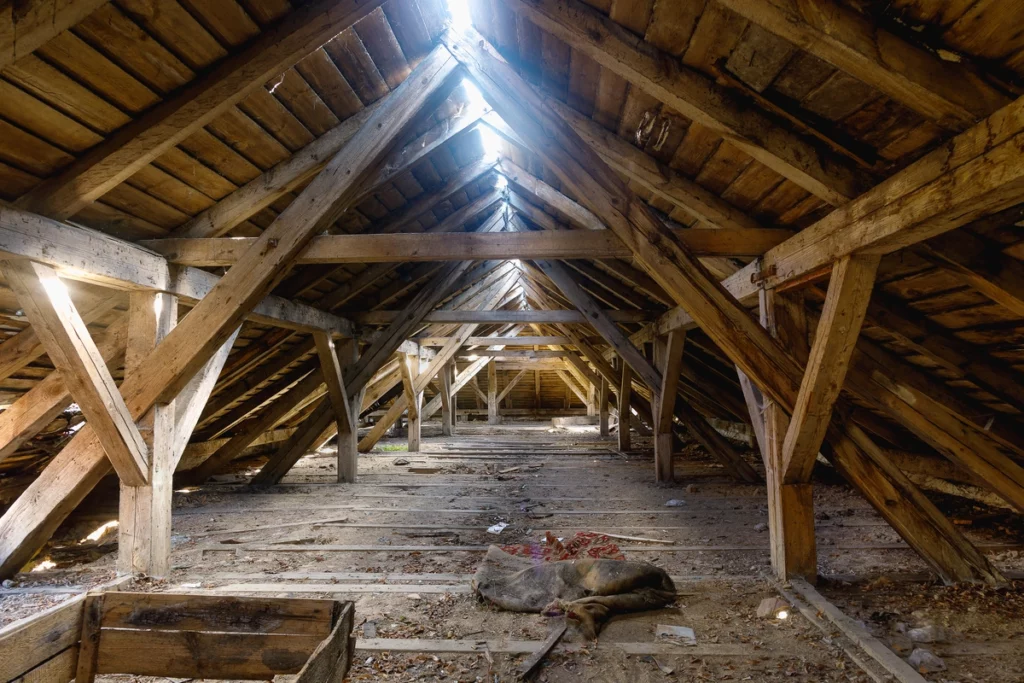
If you have an unfinished attic, emergency roof repair might be needed if you notice light shining through the roof boards.
This is a clear sign you have some pretty severe damage and should place a tarp right away as the hole is large enough to let light in, it will definitely let water in.
Higher-Than-Usual Energy Bills 📈
Your roof needs to be properly sealed and ventilated in order to keep your home running efficiently. If you’ve noticed your cooling or heating bills skyrocket one month, a roof inspection could diagnose an issue before getting your HVAC systems serviced.
Follow These 7 Emergency Roof Repair Tips
When you’re facing emergency roof repair on your home, there are a few key things you should do to make sure you:
A) prevent further damage, and
B) get your roof fixed ASAP
Follow these tips, and you’ll end up saving yourself a ton of time, energy, and money.
1) Inspect Your Property As Soon As Possible ⏳
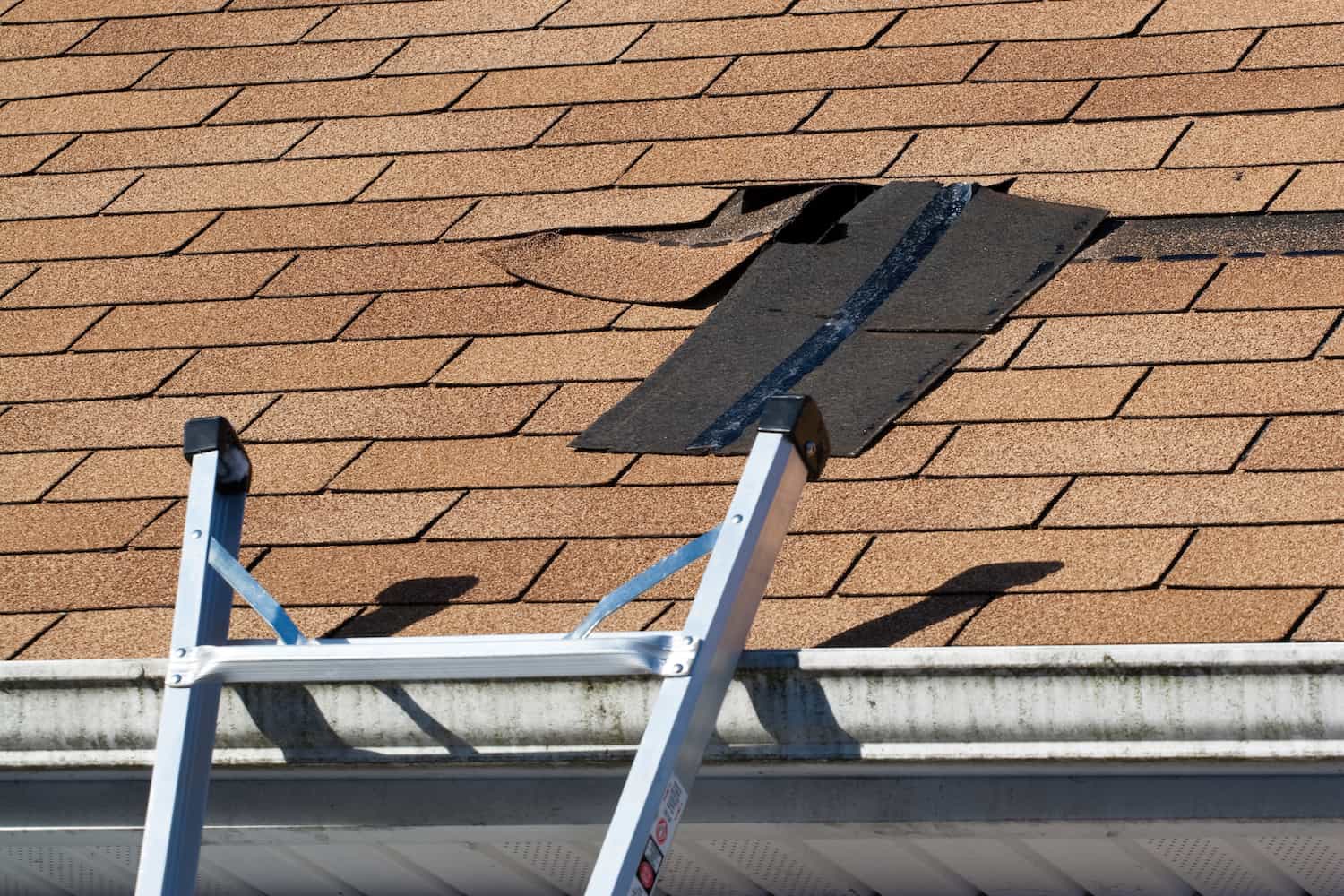
After a storm passes, you may be dealing with power outages or a mess in the yard, among other issues, but as soon as it is safe to do so, it is smart to do a thorough walk-through of your property looking for damage.
Check your exterior for hail dents, roof granules, and large debris on the roof. Then, check the interior for those signs of roof leaks like water stains on the ceiling or walls. Doing your own inspection first can help indicate whether you need a professional inspection or not.
2) Document Everything 📸
As you inspect your property, take photos, make notes, and mark anything you think might be damaged. This can come in handy when it comes time to file an insurance claim and get a professional inspection.
3) Tarp the Roof if Possible 🩹
If you see any large areas of damage, it’s important to tarp the area as soon as possible to prevent further damage like water leaks.
You can buy a tarp at any hardware store, and most likely, you’ll be able to find one that’s big enough to extend at least 3 feet of excess tarp past the spot of the damage. The video below demonstrates how to properly tarp your roof:
4) Make Minor Repairs ⚒️
If you are able, and it is safe to do so, feel free to make some minor DIY repairs. Small holes or a single cracked shingle can be easy enough to replace on your own and mitigate the further risk of damage.
5) File an Insurance Claim 🧑💻
If the damage is more significant, it’s time to file an insurance claim. The first step is usually to get a professional roofing company to come out and inspect the damage and give you an estimate for emergency roof repair.
At this point, your insurance company will likely send out their own adjuster to look at the damage and give you a second estimate.
6) Call a Reputable Contractor 🤳
Steps 5 and 6 can coincide with each other and probably happen simultaneously. Most reputable contractors will be able to help you with your insurance claims process as it can be complicated and hard to navigate if you’ve never done it before.
It’s also vital to hire a contractor who is trustworthy, local, and offers workmanship warranties on repairs so you can rest easy should anything happen due to poor installation. This is a major benefit of choosing a highly-rated roofing team.
7) Schedule Your Repairs! 🗓️
Once you’ve got your contractor chosen, it’s important to get emergency roof repairs done as soon as possible. The longer you wait, the more risk there is for additional damage.
Roof Repair Frequently Asked Questions
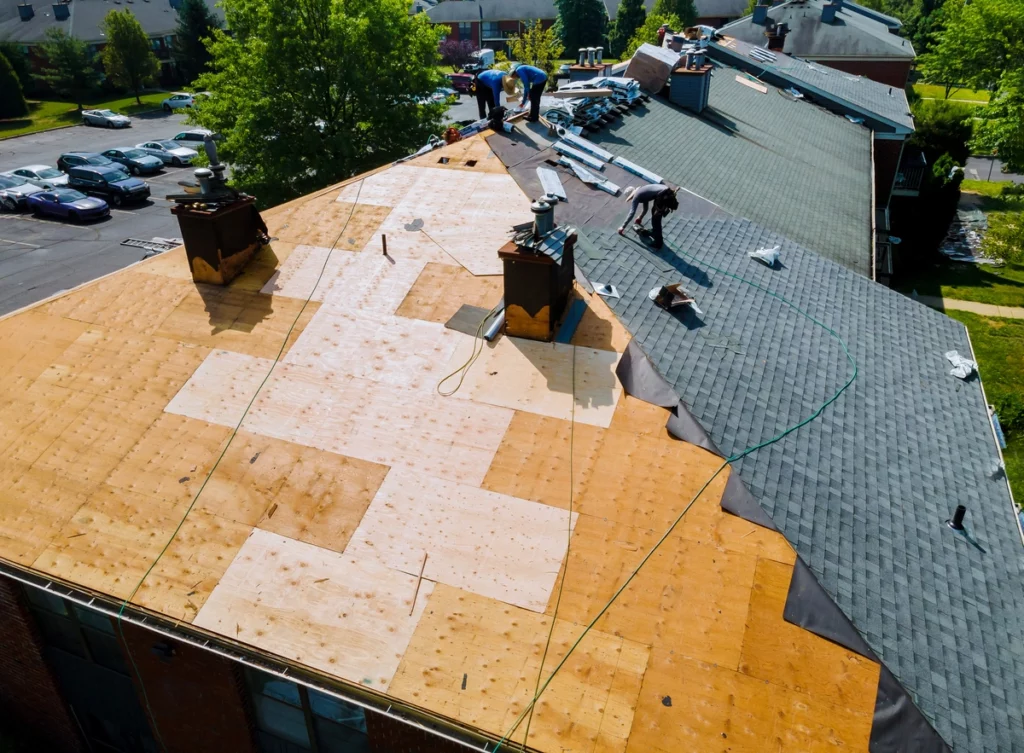
Some common questions we get regarding roof repair include:
Q: What Is Considered an Emergency Roof Repair?
A: Emergency roof repair is any work that needs to be done on your roof to prevent further damage and keep your home and family safe. That could mean anything from a full roof replacement to simply nailing down some loose shingles. No matter how big or small the emergency repair may be, it’s important to take care of it as soon as possible.
Q: Can You Put Off Roof Repairs?
A: It’s never a good idea to put off emergency roof repairs. The longer you wait, the more damage your roof will sustain, and that could lead to even bigger problems like water leaks or mold growth. If you’re not sure whether or not the damage is severe enough to warrant emergency repair, it’s always better to err on the side of caution.
Q: Can I Do My Own Roof Repairs?
A: It depends on the severity of the damage. If it’s something small, like a cracked shingle or a hole in your roof, you might be able to do the repair yourself. However, if the damage is more significant, it’s always best to leave it to the professionals, like Clean Cut Roofing.
High-Quality Roofing Service From Our Clean Cut Team
Clean Cut Roofing offers superb roofing services to people across Texas and Louisiana, and we are proud to provide some of the best roofing materials in the industry.
Whether you need some minor repairs or a full roof replacement— we’re there for you with custom, clean-cut solutions you can count on.
Contact us here to get started on your roof!
